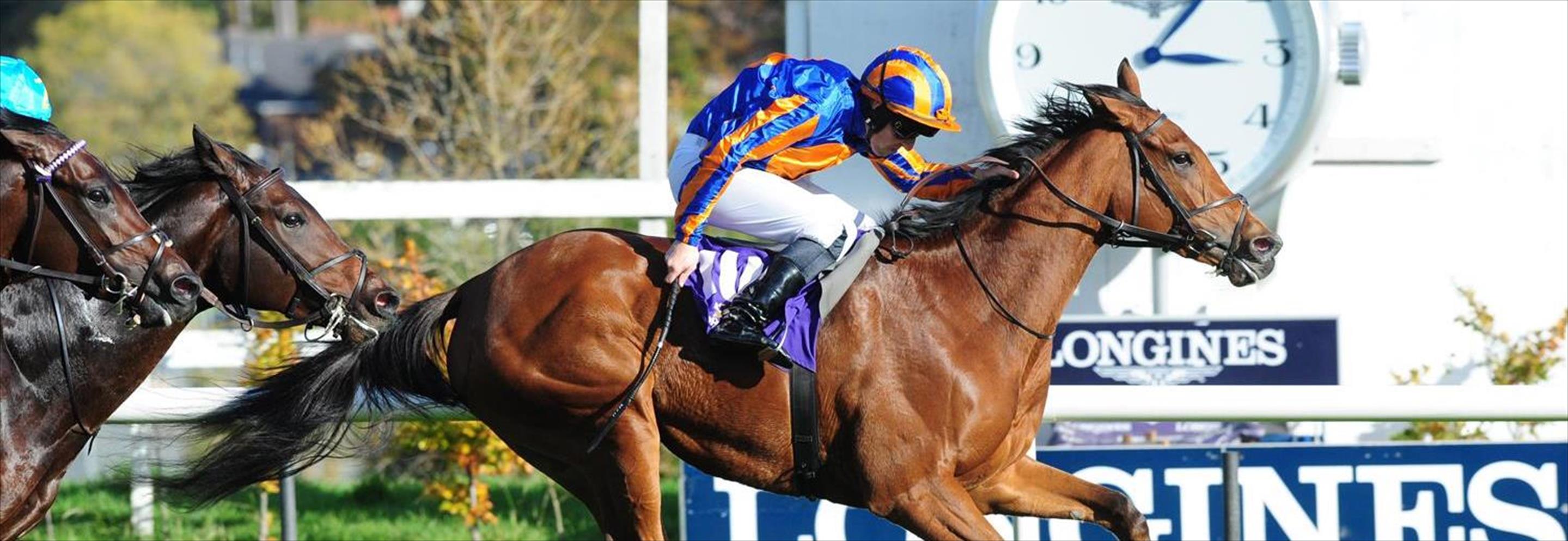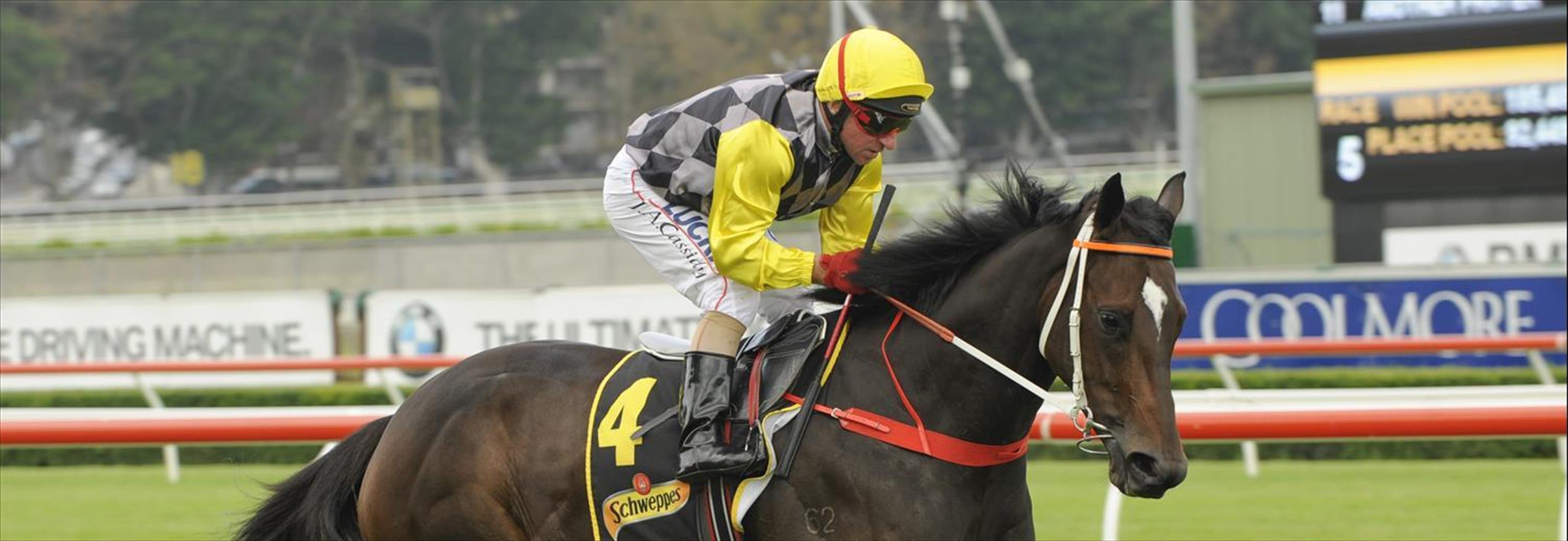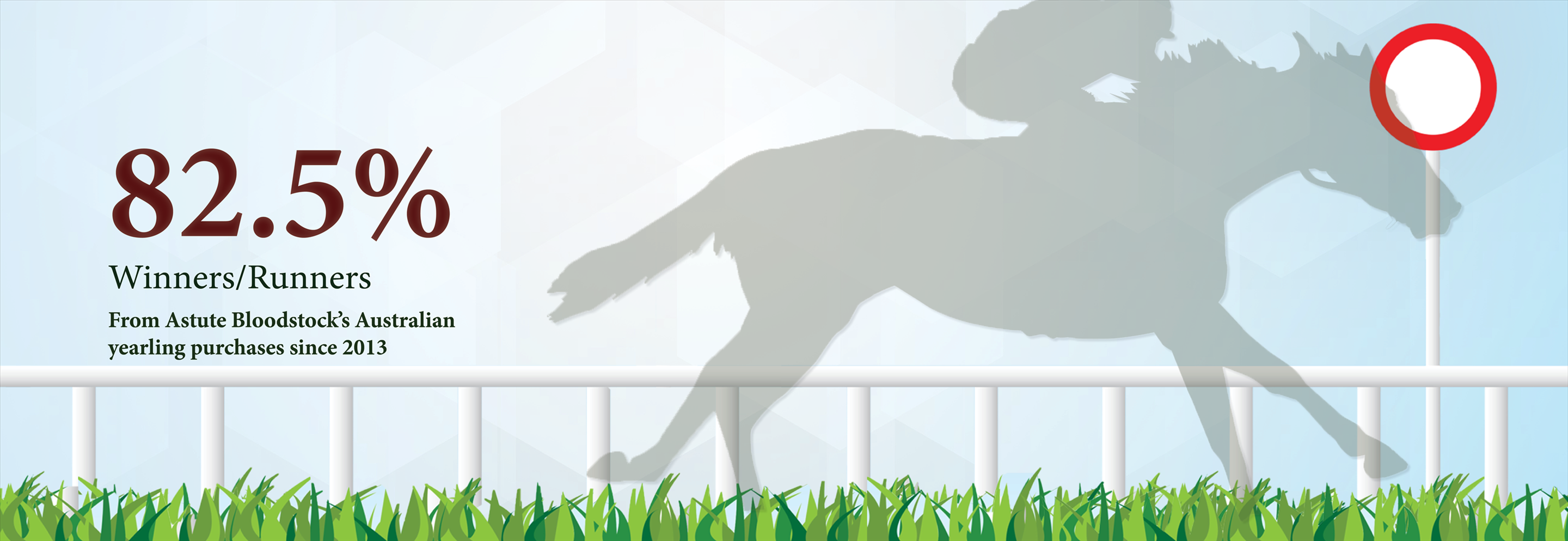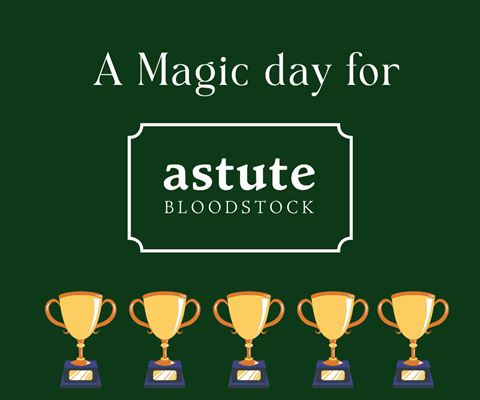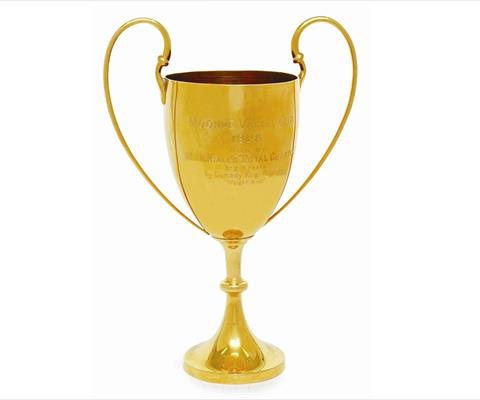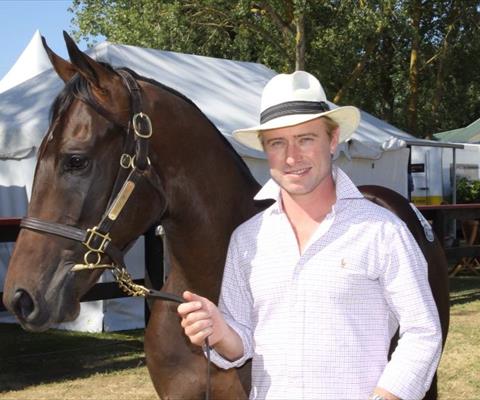
TDN - Astute Agent has Global Perspective
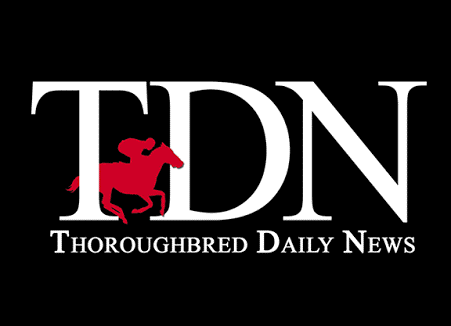
08/04/2018
By Kelsey Riley
A little more than five years after launching Astute Bloodstock in Sydney, Frenchman Louis Le Metayer has enjoyed success with horses purchased both domestically and overseas. A highlight came just last month when European imports Harlem (GB) (Champs Elysees {GB}) and Ventura Storm (Ire) (Zoffany {Ire}) finished first and third in the G1 Australian Cup. TDNInternational Editor Kelsey Riley caught up with Le Metayer as he prepares to shop the Inglis Easter Yearling Sale to talk about a wide range of topics from Australian speed and the shuttle stallion debate to finding value at sales.
KR: You’re from France and have worked all over the world in the racing and bloodstock industries. Why did you decide to base your business in Australia?
LLM: I grew up on Haras du Buff in France so was fortunate to grow up around horses, and have worked all over the world in the Thoroughbred industry. My parents encouraged me to travel so I spent time in England, Ireland, America and South Africa. When I first arrived in Australia it was supposed to be for six months and I wasn’t planning on staying much longer, but it just felt like a very interesting vibe. It felt like it was booming and on the rise. I also didn’t want to be in competition with my family; my mother runs the farm and my brother has a bloodstock business in France so I just wanted to do my own thing and create my own identity in the market.
I was lucky enough to work for four years for Lindsay Park and four years for Arrowfield, and that gave me a really good base to understand the industry and make good contacts. It was probably the best start, to work for a great trainer and a very successful stud farm.
I started my own business in January 2013 and started very small and slowly. Now we’ve had a couple big results. Our first yearling that won a stakes races was called My Country (Aus) (Poet’s Voice {GB}) [A$140,000 yearling]. That helped me to get a few more clients on board. Then we had a horse called Wolf Cry (Ire) (Street Cry {Ire}) [A$320,000 yearling] who turned out to be a group performer as a 2-year-old, so we started with small numbers but high quality, and that is what has been our philosophy.
KR: You have had a lot of success especially lately with European imports you purchased. We know that demand from the likes of Australia and the Middle East is pushing up the prices of these horses; is there a way to find value in the tried horse market?
LLM: The tried horse market is very interesting. I spend three months of the year in France–all of July, August and October–and my assistant, Nicolas Lefevre, is there from Royal Ascot to Christmas basically.
I don’t think you can find value in the horses in training market. Having said that, if you find the right horse it will pay for itself in Australia because the prizemoney is so good.
When you buy horses in training you realize eight horses out of 10 fail the vet. That doesn’t mean they can’t race, but if you’re going to pay a lot of money for a horse and you know it has something that could become an issue, you have to decide whether to take the risk. Also, a lot of the top European horses are not suited to Australian racing. Here, we have tight tracks with short home straights. We have fast ground and we find that a lot of horses in Europe are not suited to that. The challenge is to find a horse that one, is very good; two, is buyable; three, passes the vet; and four, has the physical attributes to suit Australia. When you put all those factors together, it’s a huge elimination process and you end up with very few options.
So, if you find the right horse that ticks all the boxes, we’re quite happy to pay a big price for them. Harlem (GB) (Champs Elysees {GB}) cost about a million dollars [520,000gns], but has earned about A$1.4-million in prizemoney [since arriving in Australia]. So while it looks very expensive at the time, it’s actually good value. The first horse we bought out of Europe was called Pilote d’Essai (GB) (Oasis Dream {GB}). We bought him for about £250,000, and he’s won the Ballarat Cup and the Pakenham Cup, and he basically reimbursed himself. We have another horse, Ventura Storm (Ire) (Zoffany {Ire}) [bought privately], who ran second to Winx and third to Harlem in the Group 1, so he’s Group 1-placed twice now. He cost a fair bit of money as well but he has every chance to reimburse his purchase price.
So value is not what we’re looking for: we’re looking for a superior athlete that’s going to be able to perform in Australia.
KR: Similarly, I remember you mentioning at Magic Millions that the strength of the Australian yearling market has caused prices for horses to rise considerably. Has that caused you to change how you do business? Are there any spots in the yearling market where value can be found?
LLM: The market is going up and up and up and we’re finding it is harder to buy the top yearlings. Having said that, Nicolas and I look at 7,000 yearlings a year between Australia and Europe. It is hard to find value but when you look at so many horses you’re bound to find some that fall through the cracks. If you only look at the Redoute’s Choices, Snitzels and Fastnet Rocks, it would be hard to find value. But if you look at every single horse on the market and you’re looking for only one thing, which is a superior athlete, every now and then there’s going to be a nice horse that you can buy at a reasonable price. We often find the horses we prefer as yearlings are not necessarily that expensive in comparison to some of their peers. I think your value comes by doing your legwork and having a wide net and making sure you’ve had every single horse out of its box and looked at.
Now we have all this information on our iPads and every time a horse wins a race we can go back and look at our notes. We learn from that and we find there are specific comments that we write on our books that keep coming up when we look back two years down the road. You’re always learning about what defines a superior athlete. And sometimes there are horses that don’t look like much of an athlete but they have the heart and the will to win and that’s the hardest thing to identify.
KR: There is much discussion about the fact that the Australian breed has become so focused on speed. What is your take on this? Is this a good thing? A bad thing?
LLM: Australian racing is very focused on speed, and I think it is a good thing because that’s what Australians are renowned for. It’s really Australia’s point of difference; we’re very good producers of 2-year-olds and fast horses. I do think it’s a good thing overall, but I think being the best at producing sprinters has made us the worst at producing stayers. In that sense, it’s not that good because the whole market and the racing industry are all focused on speed. The problem we have is that a third of our Group 1 races are above 2000 metres, but only 8% of our overall races are above 2000 metres. We don’t have the program to teach horses to stay from their early starts, and we don’t have the training centers. To train a stayer you need those long, uphill tracks like they have in Chantilly or Newmarket. It is very difficult for Australian trainers to train stayers on tight tracks. Horses that are bound to become stayers here tend to have their first start over 1200 metres or 1400 metres, where in Europe a horse that’s bred to stay will have his first start over 2000 metres and learn to become a stayer from day one.
KR: Another common topic of discussion is the colonial vs shuttle stallions debate, and which are more effective. Where do you fall on this?
LLM: I’m very pro shuttle stallions. I think it’s an international industry and we need to have an international mindset. If we didn’t have shuttle stallions we wouldn’t have had Street Cry, Danehill and thus Redoute’s Choice, Snitzel, Fastnet Rock; I’m very pro shuttle stallions because Thoroughbreds are extremely inbred. If you look at any Thoroughbred’s pedigree, sometimes there will be duplications of different stallions 10 times. Obviously a lot of the shuttle stallions don’t work, but I think Australian breeders have to support a shuttle stallion that may bring a different bloodline and that has the physical attributes to suit Australian racing. Arrowfield has brought some horses from Japan and I think it is a great idea. We need a new influx of blood. The whole of Australia is saturated with Danehill blood so I’m very pro shuttle stallion, knowing that otherwise we wouldn’t have had the likes of High Chaparral, More Than Ready and Street Cry.
KR: What do you think are the main strengths of the Australian industry, and subsequently, the challenges?
LLM: The main strength is that the Australian industry is very well governed at the moment, and it is inclusive of everyone. People can buy 2% of a horse or take a 10% share with a friend, or five people can have 2%, 1%; I think there’s an average of about seven to eight owners per horse in Australia, which means that when you have a card of nine races, with 20 horses in each race, and you multiply that by seven, you end up with 1000 owners.
The owners are the best promotion for the sport and syndication companies in Australia have done a very good job. I think there are better syndication companies now than there ever were with some very dynamic companies that are really marketing the sport and allowing moms and dads and people from all walks of life to have a small interest in a horse. That leads to stronger attendance at the racecourse, because they bring their kids, they bring their friends and families.
I think that’s what sets Australia apart. One in about every 300 Australians owns a racehorse. In France it would be the opposite. There might be one or two owners per horse. And sometimes you have these exceptional racecourses with some of the best horses in the world running, and the racecourse is half empty. I find that sad. I love going to France and I spend a lot of time there and try to do a lot of business there, but they need to learn from the Australian model a bit more and stop the elite mentality and include people in the sport.
KR: Do you think there is a way to get the culture of racehorse ownership and syndicates to catch on in other countries?
LLM: I’m sure there is. In France where I grew up, at Haras de Buff, it is very close to a town called Alencon. In Alencon there are 40,000 people and there are 10 pony clubs. What that says to me is there is a very strong horse culture and a lot of people out there who like horses. There are a lot of people in France who really enjoy the animal and the outdoor life and they ride horses on the weekend. France Galop needs to convert those people and say ‘hey, why don’t you come to the races?’ And make it fun for them. But when you have five big owners who control the sport and who have most of the runners in all the big races, it’s not that exciting.
I think there is huge opportunity for France to capitalize on those young people who are growing up around horses and it is just a matter of inviting them and having initiative and welcoming those people to our sport. All you have to do sometimes is just open the doors, have an open day. I’m sure there are plenty of kids who live in Chantilly who have never been able to go to the training center, and it is one of the most beautiful things in the world. The stud farms are extremely beautiful and some people who grew up in the same village may never have had the opportunity to go there and pat a foal and visit the farm.
I think the best introduction to the sport is getting young people to spend time with young foals. I’ve seen it with my friends and family. I have friends who have no interest in horses or racing, but if I put them in the paddock with foals, they can’t help but fall in love with the animal. I think sometimes when you’re a professional in the industry you don’t think about these things.
KR: What first-season sires have caught your attention this year?
LLM: Deep Field. I’m a big fan of Deep Field. I was a big fan of him as a yearling and he was a wonderful horse. He had a lot of speed, he has no Danehill blood, he is by Northern Meteor, who was a big loss to Australian racing because he was a great stallion. He produced six Group 1 winners from his first four crops and he’s out of an exceptional mare and is a full-brother to [G1 Caulfield Guineas winner] Shooting To Win. I thought his yearlings looked outstanding. We tried to buy three and managed to buy one. I think the market agrees, the market seems very keen on them as well so a lot of people must have seen what we’ve seen. Last year we tried to buy Zoustars because we were really impressed with them and it seems like he’s going the right way. [Editor’s Note: Zoustar, also by Northern Meteor, is the current leading first-season sire].
Deep Field wasn’t an early horse himself, so I just hope that they’re not going to be pushed too early. They look early but sometimes that doesn’t work out. Northern Meteor wasn’t a 2-year-old and Deep Field wasn’t a 2-year-old so I hope the trainers give them enough time because it’s a good way to ruin a stallion, by pushing the progeny if they’re not going to be early. But he ticks all the boxes for me. Even though he wasn’t a Group 1 winner he was so fast and an amazing horse. He’s out of an Elusive Quality mare, so there you go, another shuttle stallion.
KR: Are there any lesser-talked about sires that you think offer value?
LLM: I really like a horse called Scissor Kick. He’s by Redoute’s Choice from an amazing Juddmonte family, the family of Dansili, Hasili, Intercontinental; it’s one of the best Juddmonte families. He was a very good horse without being a champion. He’s a big scopey horse and we organized for him to shuttle to Haras d’Etreham. I think that Scissor Kick is not a horse that is probably on everyone’s radar, but fundamentally he comes from a great sireline, has a big pedigree, he’s a beautiful horse, a scopey horse, and he has an international pedigree. He’s pretty good value [at A$16,500]. I expect him to do well in Europe too because he’s a big, rangy horse and has a lot of scope about him. I can imagine his progeny being good milers in France.
Last Saturday was a special day for Astute Bloodstock
